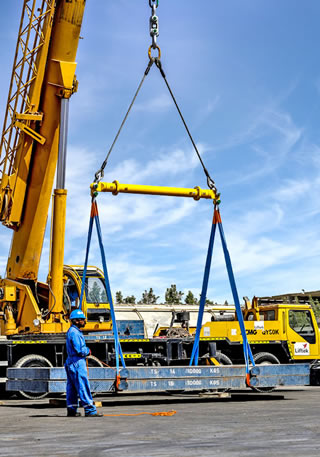Gas field construction projects are known for their complexity, tight schedules, and demanding safety standards. Whether it’s installing heavy pipelines, erecting process modules, or lifting storage tanks, traditional lifting approaches often involve significant logistical challenges, increased downtime, and higher costs. This is where modular lifting solutions come into play—providing a smarter, safer, and more efficient way to manage lifting operations in gas field construction.
What Are Modular Lifting Solutions?
Modular lifting solutions refer to customizable and scalable lifting equipment such as modular spreader beams, hydraulic gantries, strand jacks, modular frames, and airlift bags designed to handle specific lifting tasks. Unlike conventional cranes or rigid lifting structures, modular systems are engineered for flexibility and mobility. They can be easily transported, assembled, and configured on-site, making them ideal for remote or rugged gas field environments.
Key Efficiency Benefits
1. Reduced Setup Time and Mobility
Modular lifting systems are designed for quick assembly and disassembly, which significantly reduces the setup time compared to traditional cranes. Their portability allows teams to move lifting equipment easily from one site to another within the gas field, saving both time and transportation costs.
2. Cost-Effective Operations
Gas field projects are capital intensive. Modular lifting equipment eliminates the need for large-scale cranes, which require long mobilization times and higher operating costs. With modular solutions, you only pay for the lifting capacity and configuration you need—nothing more. This scalability helps project managers stay within budget while maintaining productivity.
3. Improved Safety and Risk Mitigation
Safety is critical in any gas field operation. Modular lifting systems are engineered to comply with international safety standards and are subjected to rigorous load testing. They offer better load control, improved balance, and reduced risk of structural failure, all of which contribute to a safer working environment.
4. Flexibility Across Applications
From lifting compressors and separators to hoisting prefabricated units and pipeline segments, modular systems can adapt to a wide range of construction needs. They are compatible with different lifting angles, load shapes, and weights, making them suitable for a variety of lifting scenarios without the need for multiple specialized machines.
5. Environmental and Site Adaptability
Gas field sites are often located in environmentally sensitive or hard-to-reach areas. Traditional lifting equipment can be too bulky or heavy for such locations. Modular lifting systems, being compact and lightweight, exert less ground pressure and can be deployed with minimal site disruption—an added advantage for eco-sensitive zones.
Conclusion
As the gas industry continues to expand into more remote and challenging regions, the need for efficient, safe, and scalable construction methods becomes critical. Modular lifting solutions are fast becoming the go-to approach for lifting and rigging operations in gas field construction. By improving operational speed, reducing costs, and maintaining high safety standards, they help companies meet project timelines and improve ROI—without compromising quality or compliance.
In today’s high-demand energy sector, adopting modular lifting technologies is not just a trend—it’s a strategic move toward building smarter and faster.





Comments